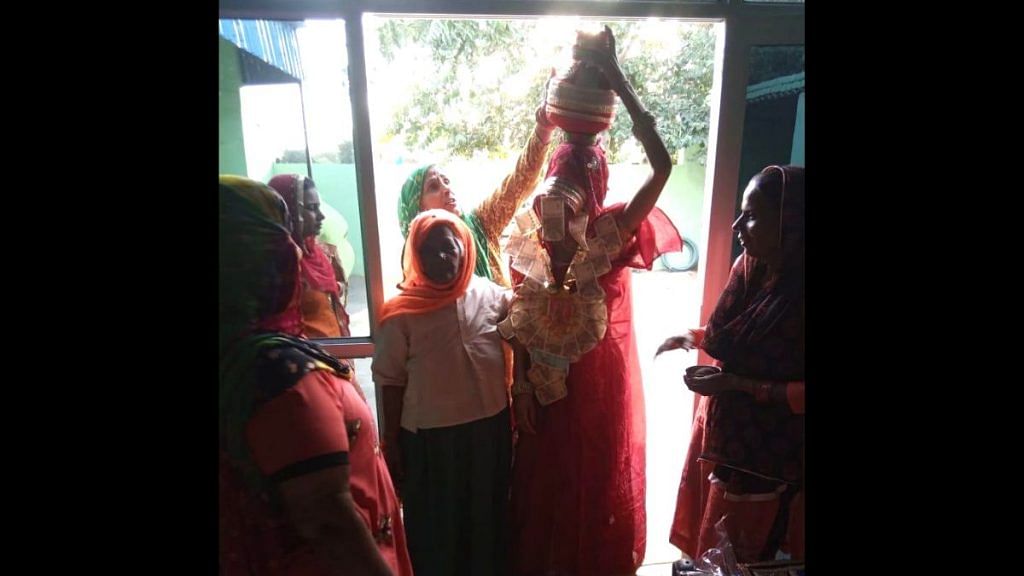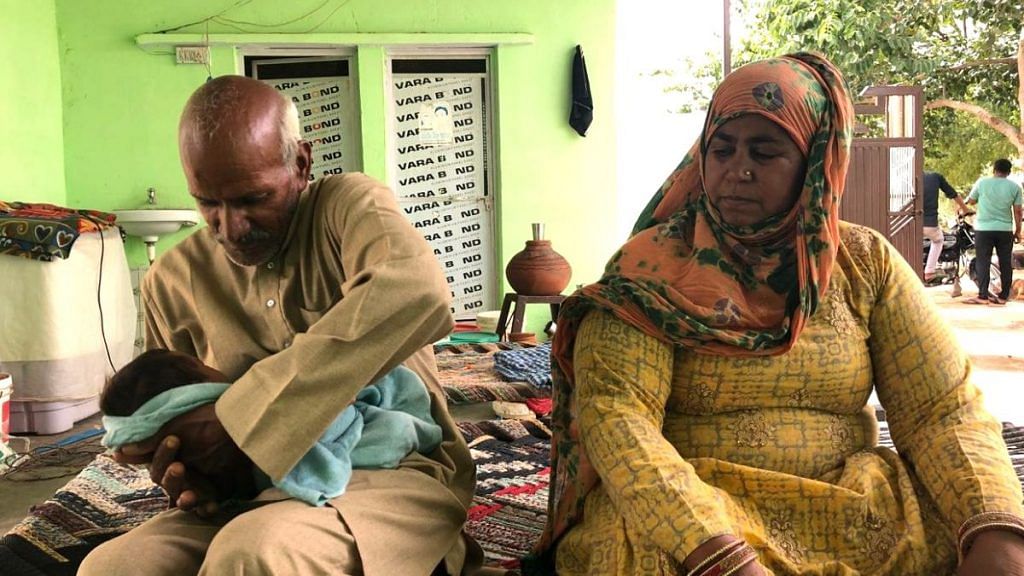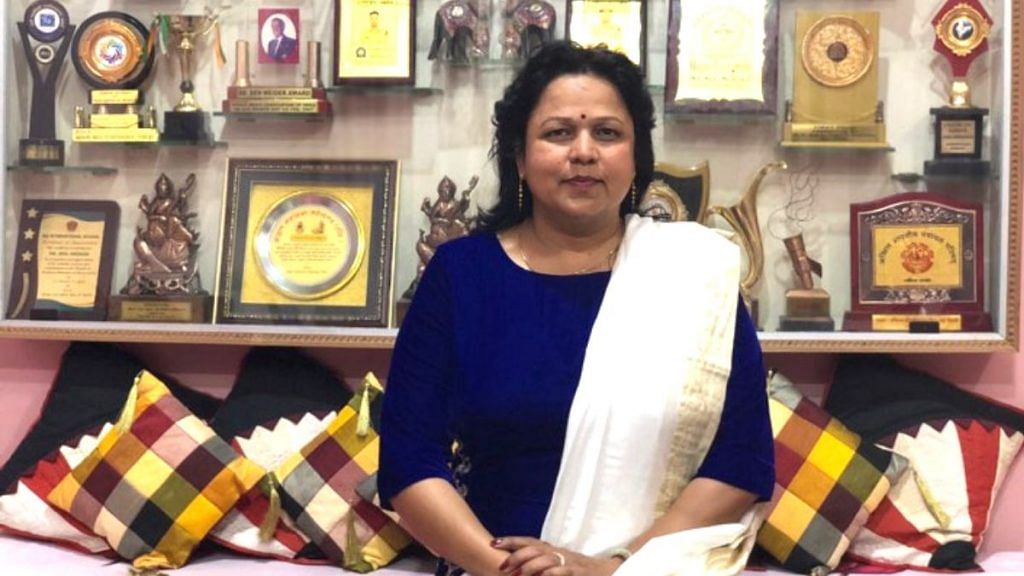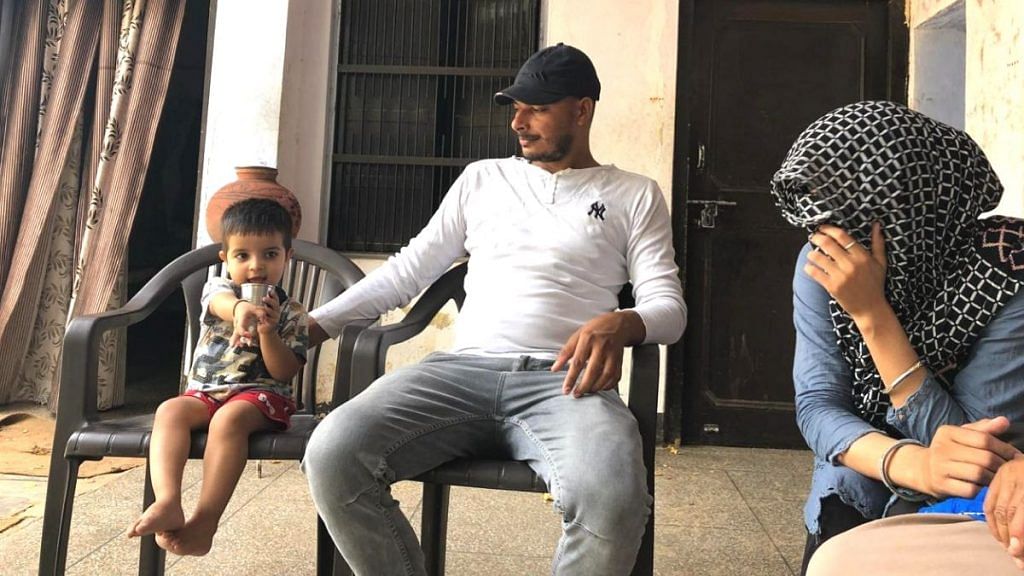Mahendragarh/Rewari: Subhash and Kamlesh, a couple from Mahendragarh in Haryana, were so happy when their daughter-in-law had a child that they organised a feast for all the village women.
They also went to a well nearby and worshipped it, performing an age-old ritual meant to thank the divine powers for baby boys. Only, Subhash and Kamlesh were not welcoming a baby boy. They were expressing gratitude for the grand-daughter they’d just been gifted.
But they are no exceptions.

Across the Ahirwal belt that spans Rewari, Mahendragarh and Narnaul in southern Haryana, village after village is performing ‘kuan pujan‘ on the birth of girl children, marking a decisive shift for a region that has been notorious for its low sex ratio.
The refrigerator at Kamlesh and Subhash’s home in Chelwas village is still packed with rasgullas from the festivities. Talking to ThePrint, they could barely contain their joy.

“We have two sons. We always wanted a daughter, so when our daughter-in-law got pregnant, we wished the first-born would be a girl,” said Kamlesh. “And now we have this little angel in our hands, we are more than happy.”
At Chelwas, a group of women recalled the days when girls were named “Dhapli” and “Bhateri”, words that mean “no more girl children”.
“They (the families) thought God would get the hint and bless them with a boy next time,” Revati Devi, a resident, told ThePrint.
“Those days, when girls were born, there was no chhati-kuan pujan. But when a boy was born, women were fed with ajwain and desi ghee laddoos,” she said.
Given the prevalence of agriculture in southern Haryana, most rituals here are related to crops, sowing, reaping, harvesting. That is why wells are worshipped, on the 11th, 21st or 31st day after delivery. A day prior to ‘kuan pujan‘, bajra is soaked in water for distribution the next day.
Some villages have common wells, though some families have their own. With wells disappearing from villages owing to a groundwater crisis, some families have started worshipping the hand pump too.
‘Chhati‘ is another local ritual that involves communal festivities on the sixth day after birth.
Sarita Devi, 70, of Rasulpur village in Mahendragarh said ‘kuan pujan‘ was a thanksgiving ritual to the Gods. “It denotes happiness in the home,” she added.
A new phenomenon in southern Haryana, but the trend has now caught on in several villages, said women’s rights activist Manju Kaushik, who is credited with starting the campaign in 2006.

Also read: Rajasthan’s districts with worst child sex ratio are improving — one step at a time
“We have almost covered all the villages of Mahendragarh. For the few that are left, I am hopeful they will soon start celebrating,” Kaushik told ThePrint.
Talking about the origins, Kaushik said she “used to feel terrible when I saw women treating their own girl babies very badly”.
“I decided to do something about it. So I went to Nangal Sirohi village in 2006, and asked a family to perform ‘kuan pujan‘ for their newborn girl child,” she added. “(When I did so), Some villagers started laughing at me.
“But the change in the 13 years since has been unbelievable,” she said. “Prime Minister Narendra Modiji started the ‘Beti bachao‘ campaign in 2015, but Mahendragarh started its own Beti Bachao andolan much before,” added Kaushik.
“The attitude of people has really changed,” she told ThePrint. “I have seen this with my own eyes. The ‘kuan pujan‘ has become a significant, if symbolic, fight in this change.”
People were encouraged with cash prizes
In village Kheri of Rewari, locals said the shift in attitudes had to be incentivised. “In the beginning, the panchayats gave away prizes just to encourage people. Then, people began to imitate others who had started ‘kuan pujan‘ for girls,” said one villager. “Slowly, this caught on.”
A similar initiative was undertaken in Rewari’s Manethi village. Ram Niwas, a resident of the village, said that when his only grand-daughter, Kanak, was born two years ago, all their relatives as well as residents of Manethi were invited to celebrate.
“We didn’t wish to get a prize. Kanak is our prize,” he added. “After we celebrated Kanak’s birth this way, two-three other families also performed ‘kuan pujan‘ for girls.”

As he spoke with ThePrint, baby Kanak played with her grandfather.
Ram Niwas said he wanted Kanak to grow up and “become a pahalwan, a wrestler”. But her mother, he added with a measure of pride, “thinks she should become a CID officer”.
Recalling the times earlier, Kaushalya of Rasulpur village explained how young mothers felt sons were the only way they could expect elders’ love and care.
“My mother-in-law treated me well when I gave birth to a boy,” said Kaushalya, who has given birth to 11 children. “But when a girl was born, she refused to give me desi ghee. So, we used to think that it is better to have a boy… at least we are given good food.”
Making strides
According to the 2011 Census, Haryana’s Mahendragarh, Rewari and Jhajjhar districts had the country’s worst sex ratio — at 775, 780 and 781 girl children, respectively, for every 1,000 male children.
Realising that the terrible socio-economic indicators were becoming a national shame, the local administration took several steps, including the production of a documentary, ‘Daughter of Mahendragarh‘, in 2018, to spread awareness about the malaise.
The years of efforts were evident in state government data from 2018, with Rewari, Jhajjar and Mahendragarh, in that order, recording a sex ratio of 904, 911 and 936.
“When we were projected as villains by the media in the treatment of the girl child, we began to scout other states for ‘bahus‘, whom we brought back to Haryana to marry our sons,” a local villager said.
“We were compelled to think of alternatives. The PM’s ‘Beti Bachao, Beti Padhao scheme’ has also been really inspiring,” the villager added.
“These days, we publish stories about ‘kuan pujans‘ for girls every other day,” said Pradeep, a local journalist. “This is good and we are more than happy to publish this news to encourage more people to celebrate the birth of girl children.
“Mahendragarh was once the worst district in the country as far as sex ratio was concerned, but now things are changing,” he added.
Also read: More girls than boys in India want to become psychologists or journalists: Cambridge survey




It’s going to be ending of mine day, but before end I am reading
this impressive post to increase my experience.
This is the reason why in these area so many youth forced to rrmain bachelor . Those who are well off are marrying girls in North East region of India after paying hefty amount of money. Earlier days several brothers use to marry a single girl to keep the family intact, but Over the years girls are discouraging this due to education and no more ready to be a puppet in the hand of society and to be a victim of age old evil practice.
Excellent article! Bharat is changing. Beti Bachao Beti Pharao programs and even I am sure Amer Khans Dangal habe made an impact.